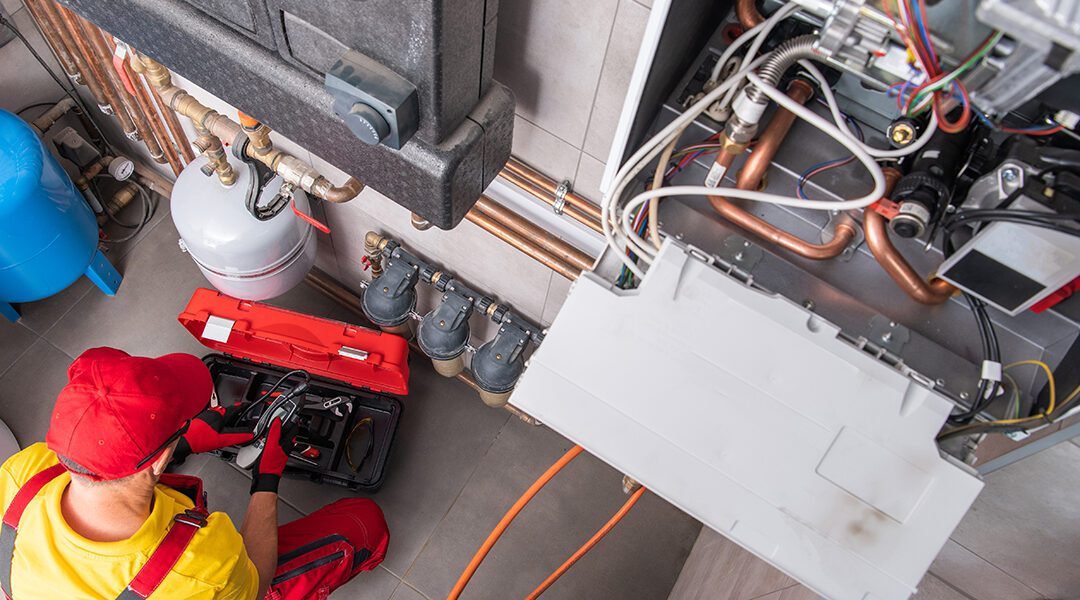When the cold season arrives, homeowners rely on their furnaces to stay comfortable through the winter. The people of Connecticut know that winters in this area can get harsh; that’s why it’s important to know your furnace will work well throughout the cold months to keep you and your family warm.
The need for peace of mind leads many homeowners to wonder, “How long does a gas furnace last?”
At SM Mechanical Services, West Hartford’s furnace repair experts, our HVAC technicians have a wealth of knowledge concerning furnaces of all kinds. In this blog, we’ll go over gas furnaces, the average lifespan, and what you can do to prolong your furnace.
For the most reliable HVAC and plumbing services in Connecticut, call SM Mechanical Services today.
How Long Does a Gas Furnace Last?
The average lifespan of a gas furnace is between 15 and 20 years. Gas furnaces have the shortest lifespan of the most modern furnaces, with oil furnaces lasting 20 to 25 years and electric furnaces lasting up to 30 years. However, a furnace can last years beyond its expected lifespan with regular maintenance and care.
How long you keep your furnace is also a matter of choice. Some people don’t mind having an older furnace repaired whenever it breaks down. Others choose to replace their furnace at the first sign of trouble.
If your furnace is over ten years old, watch out for signs of a malfunction. Most of the repairs a furnace requires occur in the final quarter of its life. If you don’t know how old your furnace is, check the owner’s manual for the serial number based on the manufacturing date.
If you can’t find the owner’s manual, check the outside of the furnace or the inside of the cabinet door for the serial number and model.
Make Sure Your Furnace Is the Right Size
Several factors can lengthen or shorten your furnace’s lifespan. One of the most common reasons a homeowner’s furnace stops working is improper sizing. If your furnace is too big or too small for your home, the heating system won’t operate correctly, and your furnace will suffer.
When someone has a furnace that’s too small to heat their home, it’s under constant strain to keep the house at a temperature it cannot sustain. When the furnace runs constantly, it wastes energy and experiences more wear and tear than necessary.
If your furnace is too big for your house, it won’t struggle to heat your home—it will heat it too well! Since the furnace is a bigger model than your home needs, it will reach your desired temperature quickly and shut off. As the temperature drops, it will kick on and shut off quickly once the temperature rises.
This issue is known as “short cycling.” Short cycling can damage vital components of the furnace, resulting in frequent repairs or early replacement.
Thermostat Settings
If you like to blast the heat in the winter, you’re probably reducing your furnace’s lifespan. The more work your furnace has to do to heat your home, the quicker it will wear out. According to the United States Department of Energy, keeping your thermostat at 68 degrees in the winter is the best way to conserve energy and stay comfortable.
Remember, setting your thermostat as close to the outside temperature as possible puts less work on your furnace. You’ll also save considerable money on energy bills.
Installation Issues Can Shorten Your Furnace’s Lifespan
If your furnace’s ventilation and fuel line installation are incorrect, the furnace will not run efficiently. The components inside can malfunction as a result. This problem can also lead to dangerous carbon monoxide leaks.
Another installation issue that can affect how long your furnace lasts is ductwork. If your ducts have leaks or gaps, or their arrangement isn’t sensible, the heat your furnace produces will head to areas that don’t need it. When the heat doesn’t move directly to the areas of the home that needs it, the furnace has to work extra hard to reach the proper temperature.
Much like a furnace that’s too small for a house, a heating system with poor ductwork will require the heater to burn more energy and fuel.
How to Make Your Furnace Last Longer
How long does a gas furnace last? The best way to extend the life of your furnace is regular maintenance.
Replacing your furnace filters prevents the system from having airflow problems that put extra work on the heater. When the filters get dirty, the debris blocks air from circulating and can cause components to overheat.
Without routine cleanings, dirt and dust can collect on the heat exchangers, inhibiting the heat transfer process. If the heat exchanger can’t operate correctly, the furnace will need more energy to bring your home to the desired temperature. Dirty fan blades can cause the fan to come off balance and damage the motor.
Check your owner’s manual to find out how often you should change your air filters, or consult the company website. Keeping your ducts clean will prevent airflow blockages that keep your heating system from performing efficiently. Remember to have a licensed HVAC technician do a thorough inspection of your furnace and heating system once a year to stay ahead of costly repairs.
Call SM Mechanical Services Today!
If you notice that your furnace can no longer keep your home at your thermostat setting, it’s blowing cool air, or your energy bills are suddenly rising, it may be time to replace it. If your furnace is making strange noises or getting louder, that’s another sign that it’s about to break down.
How long does a gas furnace last? Twenty years or more with proper maintenance and repairs.
When seeking furnace maintenance, repair, and replacement in West Hartford, CT, no company does it better than SM Mechanical Services, LLC. Click the link to read our furnace maintenance checklist and call us at (860) 530-2632 to schedule an appointment today!

